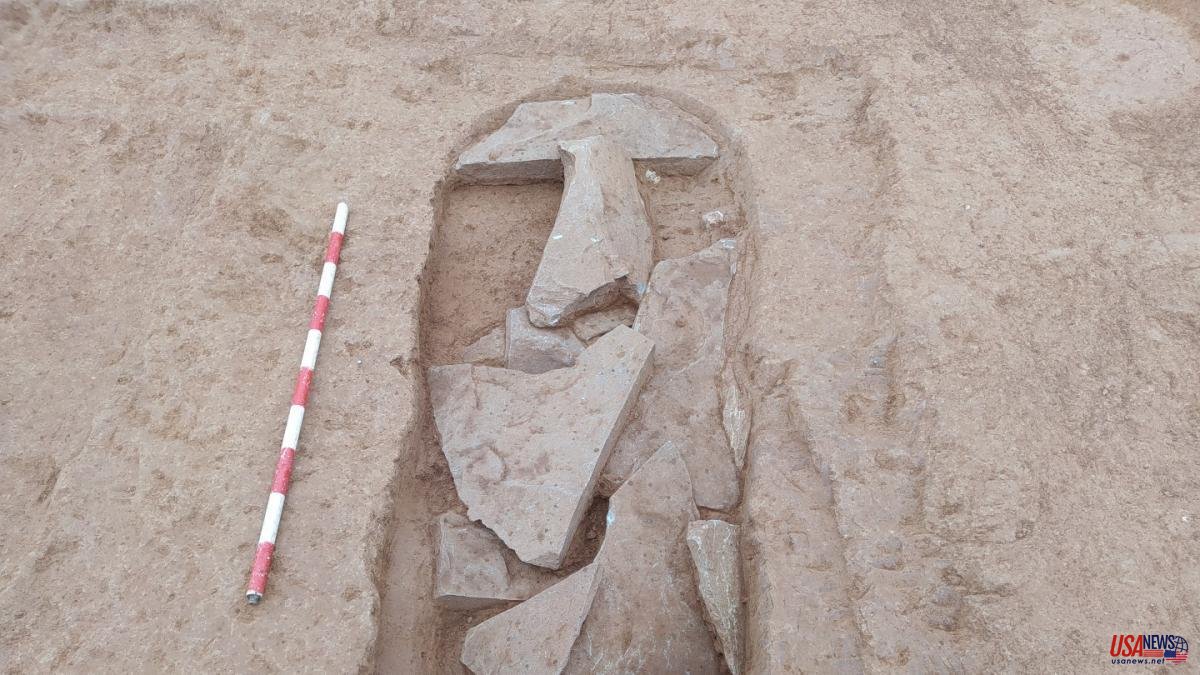The archaeological intervention carried out at numbers 32 to 50 of Calle Gran de la Sagrera, where a residential building is being built, has allowed the discovery of new remains of the Roman past in this area of Barcino outside the walls.
The action that began at the end of February, directed by the archaeologist Pau Gómez Aramburu, has made it possible to complete the historical and archaeological knowledge of the Sagrera neighborhood, whose population dates back to 5,000 years before Christ.
From the ancient Neolithic (5000-4000 BC) up to 14 grain storage silos have been documented, which would suggest the existence of a small community that settled not far from the recovered storage structures. Also noteworthy is the presence of silos from the late Bronze Age (1200-700 BC).
From the Iberian period the bottom of a silo was documented, and from the Roman period a grain deposit and remains that could correspond to vineyard ditches were also located, with a chronology between the 1st and 4th centuries after Christ.
Also from Roman times, at the intersection of Clara Zetkin and Berenguer de Palou streets, 5 tombs or burial pits were documented from the Republican period (1st century BC), with tile roofs. This necropolis would be related to the well-known Roman villa of Pont del Treball Digne, which is located about two hundred meters to the east.
This town was already active during the 1st century BC, and it is possible that its inhabitants were buried in this space, a place very close to a Roman road that would be located in the current Gran de la Sagrera and Gran de Sant Andreu streets. The Roman tradition located the necropolises on both sides of the roads or communication routes.
The present archaeological intervention in Calle Gran de la Sagrera, 32, has made it possible to document numerous finds from Roman times to date.
Initially, a large water channel excavated in the subsoil was documented, presenting three distinct and consecutive phases of use, all from Roman times.
The channel has preserved dimensions of about 90 meters in length, and a width of between 2 and 5 meters, depending on the phase of use. It would be a water structure from Roman times that would function to supply water to the surrounding vineyards, possibly related to the Roman villa of Pont del Treball, known for its wine production.
Another exceptional discovery has been the discovery of a section of Roman road, which corresponds to the road layout that passed through Gran de la Sagrera street and its continuation in Gran de Sant Andreu, an old branch of the Via Augusta.
From the excavations carried out so far, up to three levels of use of the road have been differentiated, each of which seems to be associated with a ditch and a small wall structure that delimits the road on the east side.
During the archaeological work, the traces of the ruts of the cars fossilized in the pavements of the road have also been documented. In total, up to 70 meters of track are being documented, and a width still to be determined, but not less than 3 meters.
Also related to the road, three tombs with different characteristics have been located so far.
The last documented find is part of a silo with ceramic material associated with the Bronze Age. It has only been possible to document a part since it is sectioned by one of the Roman-era canals.
The archaeological intervention will continue until the end of the year, and will expand knowledge of this sector of the city.













